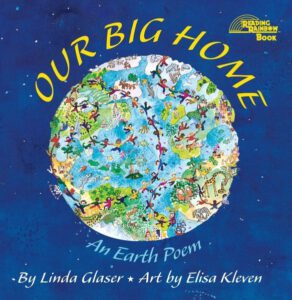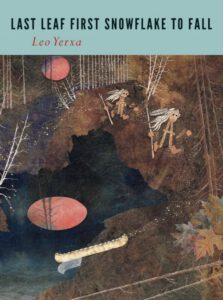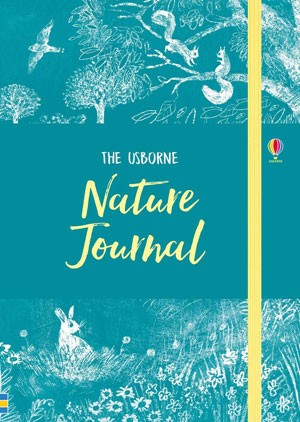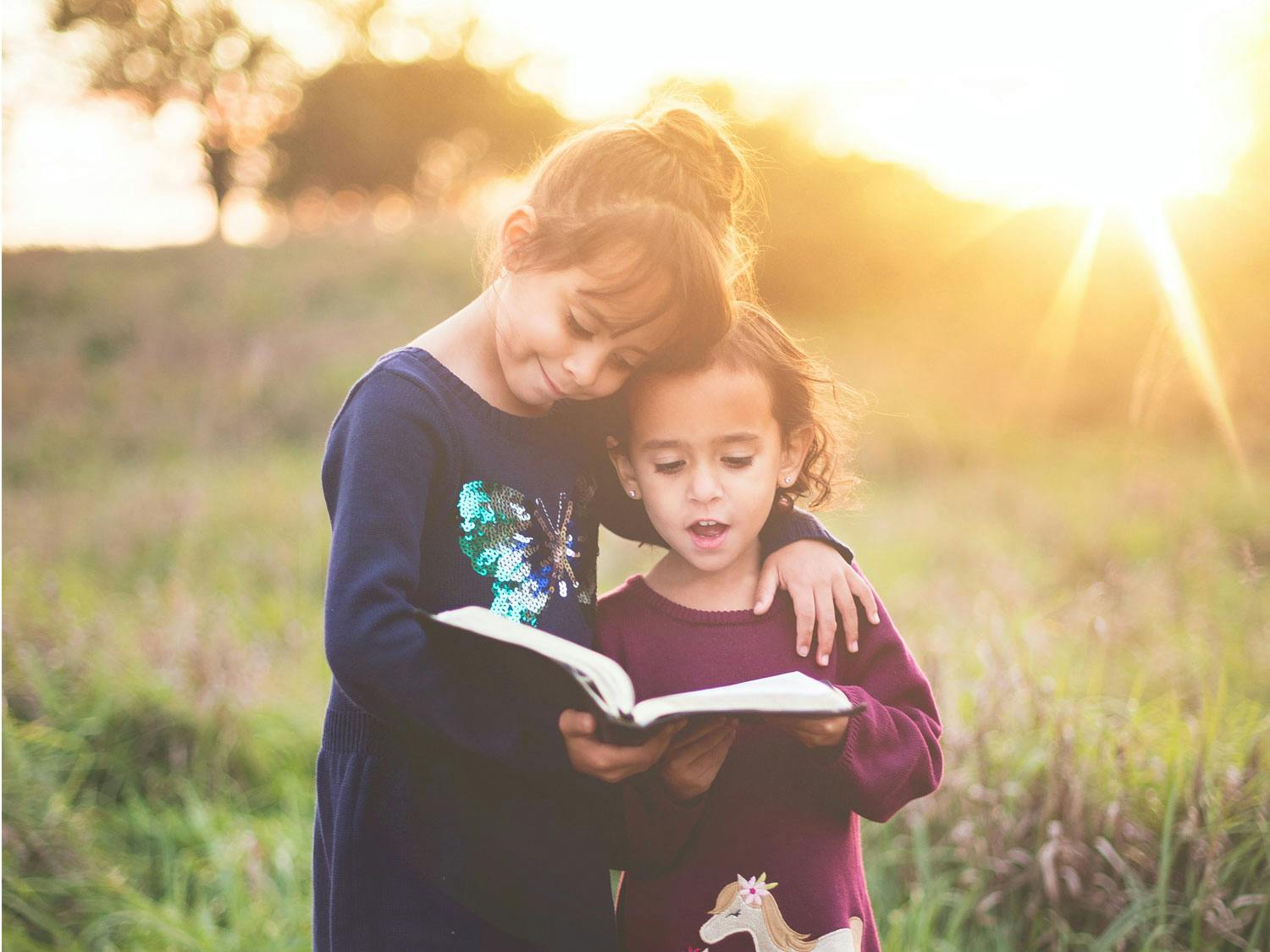Five Books to Inspire Earth-Loving Kids
Stories remind us that our relationship with the planet is stronger than our fear for the future.
My daughter, 2-year-old Mini Ewe, is as comfortable squatting in a stream studying pebbles as she is perching at the table eating cereal — perhaps more so. She seems to speak to the water as it rushes through her tiny fingers, like she and the stream share a secret language that maybe I knew but lost somewhere along the way.
I’ve been feeling like my anxiety over the future of these wild places has damaged my ability to speak with streams and catch whispers on the wind. At the very time I need nature’s healing power the most, watching my daughter play with pebbles only reminds me of how much we have to lose.
I wish I could bottle the magic that Mini Ewe feels, and breathe it in every time I feel despair. Until magic-bottling tech goes mainstream, though, I’ll keep finding ways to bring nature’s enchantments into every aspect of our lives.
As an outdoor educator, I’ve lived in the wilderness for weeks at a time — one group of students was even convinced I was raised by wolves. But since having my own kids, I find myself within four walls more than I’d like, so I’m always seeking ways the leaves, birds, and breeze can follow my family inside.
At the very time I need nature’s healing power the most, watching my daughter play with pebbles only reminds me of how much we have to lose.
Here are five books to help raise the youngest earth-lovers — and maybe help us grownups stay enchanted by the Earth we’re fighting for.
Nature’s hello to the newest humans
On the Day You Were Born
Written and illustrated by Debra Frasier (suitable for ages 0 to 3)

This book is a classic baby gift. While infants love the bright, contrasting colours, the message makes many parents (like me) a bit misty-eyed, even after our kids are old enough to read it to us. The dedication brings some big feels right away — to Mother Earth, Frasier’s own daughter, “and you” — and the heartstrings keep thrumming throughout. Frasier’s lines become song lyrics, welcoming the newborn “out of the dark quiet” and into nature’s orchestra of order. “On the day you were born, the moon pulled on the ocean below,” it reads. “A rising tide washed the beaches clean for your footprints.”
And for a moment, we remember that feeling: each footstep on the sand was new at some point, and animals were kindred spirits. This book grounds me in love both for my tiny people, and the world that welcomed them into its rhythms.
Poetry for protectors
Our Big Home: An Earth Poem
By Linda Glaser and Elisa Klevin (suitable for ages 2 to 5)

Emphasizing play and the feeling of being part of something bigger, this little book is a balm in a world of bad news. The illustrations capture tiny minds through detailing all the diverse cultures and creatures finding ways to share our home, our planet. There’s something about reading the poetry on these pages out loud to my kids that even placates my climate anxiety. It’s just for a few moments, but it’s enough.
Our Big Home exudes empathy and shared experience, which is essential if we are to overcome what Florence Williams, author of The Nature Fix: Why Nature Makes us Happier, Healthier and More Creative calls an “epidemic dislocation from the outdoors.” This isn’t restricted to adults; children, too, are forgetting how to connect with nature’s elements and creatures. If we could bottle some of the playfulness of this book, it would go a long way to reconnecting us to all the things that matter.
For adventuring activists
Last Leaf First Snowflake to Fall
Written and illustrated by Leo Yerxa (suitable for ages 3 to 7)

Before finding this book, my 4-year old, Little Grey Lamb, asked, “When did the first winter happen?” Kids love looking for beginnings, and by bringing readers to the moment when the very first fall became winter, this story brought Little Grey’s imagination to life. Ojibway author and artist Leo Yerxa makes readers feel as though we’re sitting on the edge of the world as we watch an adult and child wend their way through the wilderness by canoe.
“Playing, rolling on the ground, I was a leaf, ” the young narrator declares from a multicoloured pile of autumn’s cast-offs. Young readers might also feel this way — they, too, are nature, inseparable from its colours, sounds, and textures. Research has found that just as children’s language and aptitudes develop in phases, so too does their relationship with nature. The first phase involves feeling at one with the environment, and as caregivers, we can create positive, immersive experiences that allow this to emerge. While nothing can replace adventuring into the wild itself, it’s also important to share literature that mirrors those adventures.
In Yerxa’s creation, nature is both powerful and playful — and, most importantly, a magical process that we can watch unfold.
They may be wee, but they are warriors
The Little Hummingbird
By Michael Nicoll Yahgulanaas, with an afterword by Wangari Maathai (suitable for ages 5 to 8) Note: This book does contain discussion of forest fires.

While this book is more explicitly environmentalist than others I’ve included, this list would be incomplete without it. My own little hummingbirds love this story of a tiny being just like them trying to accomplish big things against all odds.
Haida author Nicoll Yahgulanaas reinterprets a Quechuan tale with Ecuadoran and Peruvian roots, explaining that the tiny protagonist, the hummingbird, has cultural significance for not only the Quechua, but also the Pueblo, the Haida, and the Tsimshian.
The tale follows the plight of a hummingbird whose home and neighbours are threatened by a forest fire. Although she could fly away, she chooses to “do what [she] can” and tirelessly flies one drop of water from a stream to the fire.
My own little hummingbirds love this story of a tiny being just like them trying to accomplish big things against all odds.
Kenyan activist Wangari Maathai’s afterword reminds us that this isn’t just a metaphor; Maathai’s Green Belt movement has had an enormous impact on watershed health and local livelihoods in Kenya, simply by planting one tree at a time.
It’s taken time for my 4-year-old to process the wildfires that turn our air thick with smoke with increasing regularity, so be aware this story could be unnerving to some kids. Nonetheless, it can also help tiny people feel empowered to make big change.
For creative conservationists
The Usborne Nature Journal
By Rosie Hall (for ages 6 and up)

And now for something a little different: A book for your family to write together. This little journal provides just enough structure to inspire kids to doodle, journal, or transcribe some of their own thoughts on each themed page. Your mini-Thoreau might want to start a moon diary on the page next to the moon-gazing chart, or try their hand at drawing local petals next to the diagram of flower parts.
Martin Shaw, mythic storyteller and author of Scatterlings: Getting Claimed in an Age of Amnesia, encourages us in this time of calamity “to be of a place,” not simply in it. “To be of is to hunker down as a servant to the ruminations of the specific valley, little gritty vegetable patch, or swampy acre of abandoned field that has laid its breath on the back of your neck.” Kids live in the details — 4-year-old Little Grey is very excited to document everything from the birds on our lake to the blades of dead grass in this DIY discovery journal.
I love that this little book lets our family hunker down in the world at our doorstep, and beyond.
By creating experiences in nature for our kids, we’re also teaching them to be in relationship with it. At the same time, intensifying weather and reports of the climate crisis are changing my own relationship with the planet. Neil Gaiman, author of my favourite graphic novel series, The Sandman, wrote “Fairy tales are more than true: not because they tell us that dragons exist, but because they tell us that dragons can be beaten.”
I believe these books also tell us a more-than-truth — while I won’t pretend to feel cheery about our planet’s future, these stories remind me that my family, and our relationship with the Earth, are stronger than fear.
